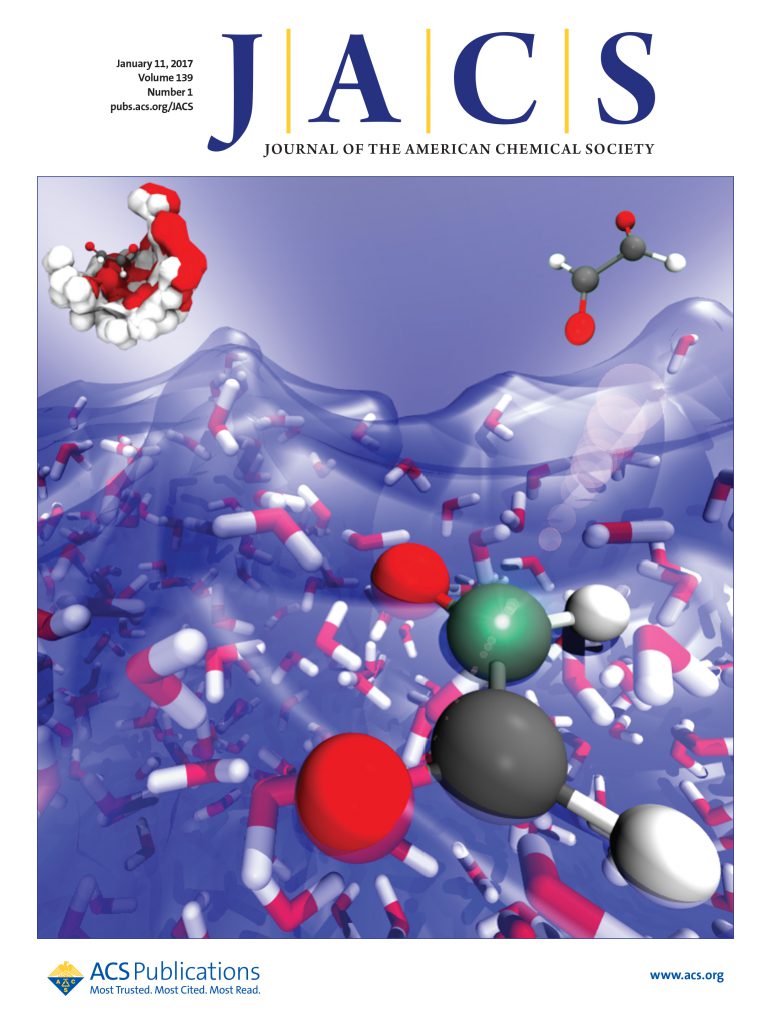阴离子金属-有机框架作为性能优异的可充电锌电池的超快单离子导体
IF 14.4
1区 化学
Q1 CHEMISTRY, MULTIDISCIPLINARY
引用次数: 0
摘要
阴离子金属有机骨架(mof)是准固态电池中很有前途的单离子导电电解质。在此,我们提出了一种阴离子MOF作为高性能准固态锌离子电池(ZIB)的有前途的单一Zn2+导体。羧酸功能化四苯基硼酸盐与zr6 -氧基团反应合成阴离子MOF,离子电导率高(- 40℃时0.83 mS cm-1, 25℃时2.75 mS cm-1, 120℃时7.9 mS cm-1), Zn2+转移数高(0.90),活化能低(0.19 eV),界面相容性好,速率性能优异。使用nh4v4010阴极制备的准固态ZIB在环境条件下在0.3 a g-1下可提供497 mAh g-1的显着容量,并且在1、5和10 a g-1的电流密度下可以保持420、350和270 mAh g-1的容量,并且在2500次循环后容量和库仑效率保持在100%。即使在- 40°C的低温或100 a g-1的高电流密度下,仍然可以实现出色的可逆容量和速率性能。本研究为设计和开发作为锌和/或其他二次电池先进固体电解质的阴离子多孔材料开辟了新的方向。本文章由计算机程序翻译,如有差异,请以英文原文为准。
Anionic Metal–Organic Framework as an Ultrafast Single-Ion Conductor for Exceptional Performance Rechargeable Zinc Batteries
Anionic metal–organic frameworks (MOFs) are promising single-ion conductive electrolytes in quasi-solid-state batteries. Herein, we propose an anionic MOF as a promising single Zn2+ conductor for high-performance quasi-solid-state zinc-ion battery (ZIB). The anionic MOF is synthesized by reacting carboxylic acid functionalized tetraphenylborate with a Zr6-oxo cluster, which displays outstanding ionic conductivity (0.83 mS cm–1 at −40 °C, 2.75 mS cm–1 at 25 °C, and 7.9 mS cm–1 at 120 °C), an impressive Zn2+ transference number (tZn2+ = 0.90), low activation energy (0.19 eV), good interfacial compatibility, and excellent rate performance. The fabricated quasi-solid-state ZIB using NH4V4O10 cathode delivers a remarkable capacity of 497 mAh g–1 at 0.3 A g–1 under ambient conditions and can maintain capacities of 420, 350, and 270 mAh g–1 at elevated current densities of 1, 5, and 10 A g–1 with both capacities and Coulombic efficiency retention at 100% after 2500 cycles. Even at a low temperature of −40 °C or with a high current density of 100 A g–1, excellent reversible capacities and rate performance can still be achieved. This work set up a new direction for designing and developing anionic porous materials as advanced solid electrolytes for zinc and/or other secondary batteries.
求助全文
通过发布文献求助,成功后即可免费获取论文全文。
去求助
来源期刊
CiteScore
24.40
自引率
6.00%
发文量
2398
审稿时长
1.6 months
期刊介绍:
The flagship journal of the American Chemical Society, known as the Journal of the American Chemical Society (JACS), has been a prestigious publication since its establishment in 1879. It holds a preeminent position in the field of chemistry and related interdisciplinary sciences. JACS is committed to disseminating cutting-edge research papers, covering a wide range of topics, and encompasses approximately 19,000 pages of Articles, Communications, and Perspectives annually. With a weekly publication frequency, JACS plays a vital role in advancing the field of chemistry by providing essential research.

 求助内容:
求助内容: 应助结果提醒方式:
应助结果提醒方式:


